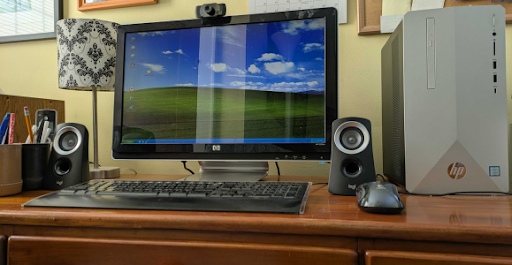It’s 3am wherever you are. You are fully awake – it’s high noon in your brain and there’s a shootout on Main Street. You’re anxious about the state of the world. Poised between desperate optimism, “It’s got to get better, right?” and hope-destroying pessimism, “The world is a hellscape”, you find yourself obsessively checking and rechecking your various news feeds to see what’s going on right now.
You’re doomscrolling. Also called doomsurfing, you find yourself wasting hours of precious time on social media reading a post that leads to another and bumping into a link, and another link, then plunging down rabbit holes and being constantly bombarded by negative news and events.
Korin Miller at Health.com defines such activity as actively seeking out “saddening or negative material to read or scroll through on social media or news media outlets” in an attempt “to get access to all the information you need to keep yourself protected from what’s dangerous around you.”
People get caught in the trap of constantly looking for depressive, negative information on social media or news feeds in order to keep themselves from danger and end up doomscrolling as a habit. This insidious habit can make a person feel anxious, apprehensive, sad and angry, and afraid about an uncertain future. It can also challenge the way you see the world, said Ken Yeager, PhD, a psychiatrist at the Ohio State University Wexner Medical Center. “People are drawn to doomscrolling because they feel like they have a sense of being able to control any of that bad news,” explained Yeager. “But doomscrolling does not create control and only makes you miserable.”
We’re all guilty of it. Who doesn’t seek protection from the increasingly crazy world we inhabit? It’s obvious, however, that doomscrolling signally fails to provide the solace we need.
HuffPost’s Sarah-Louise Kelly recently shared some of the conclusions reached by researchers at Flinders University in Australia, and quotes the lead investigator, Reza Shabahang of the College’s Education, Psychology and Social Work Department: “Doomscrolling can have some dire consequences on our mental health and well-being leaving us feeling stress, anxiety, despair and questioning the meaning of life . . . By being exposed to images and information about traumatic events, people have been found to experience symptoms similar to post-traumatic stress disorder (PTSD) such as anxiety and despair.”
It’s a huge problem for many of us. Some medicos even liken it to an addiction. A biological basis exists for doomscrolling’s ability to trap us, according to Choosing Therapy’s Mat Glowiak. “It fulfills essential human needs for survival, safety, knowledge, instant gratification, and control. Some may feel addicted to scrolling because they feel closer to the answers they seek. Unfortunately, not every problem has a solution, or we may not like the answer we find. Either way, our brains tell us to keep going.”
Until we decide to tell our brains to stop pernicious doomscrolling. A great first step is to keep track of how much time you spend doomscrolling and if it’s problematic, make some aggressive changes so you can reclaim some of that precious time.
Here’s what you need to know and how to break the habit:
Sam Brodsky at Wondermind.com has some valuable suggestions on how to minimize time spent scrolling, which include:
- Slow your scroll
- Give yourself a scroll time limit
- Step away, literally
- Actively look for good news
Brodsky’s final suggestion is particularly useful – “Read news in print.” An article in an actual newspaper or magazine is finite and won’t serve as the gateway for more links, more articles, more time lost in the digital slough.
New Yorker cartoonist David Sipress summed up the dilemma we’re all facing. A man and a woman are walking down the street. The woman says: “My desire to be well-informed is currently at odds with my desire to remain sane.” If you can’t relate to that, you’re either dead or living in a red State.
There’s no denying the mood these days is tough. The economy’s booming, so we’re told, but money seems in ever-shorter supply as inflation seems to rise daily. The political scene is so toxic you practically need a HazMat suit at the voting site. Intolerance and bigotry and racism are on the rise.
Fighting these problems (or, at the very least, not succumbing to them) is necessary for our survival as individuals and as part of civil society. That fight calls for all our strength, and doomscrolling saps motivation, energy, and positive action.
Luckily, there are ways to stop doomscrolling like thinking about how you feel after you do it, limiting screen time, and working on positivity training. It’s possible to stay informed and sane. With a bit of practice and the right choices, you can manage both.





